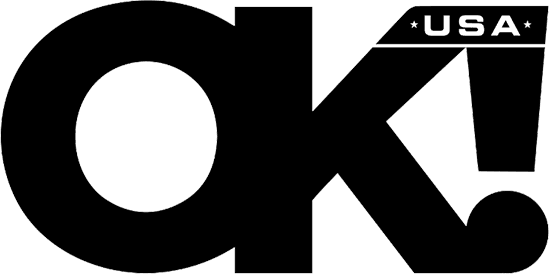 NEWS
NEWSGet Onboard: 5 Lifestyle Trends Reshaping Society

Aug. 18 2025, Published 1:16 a.m. ET
Personal lifestyles are changing at the speed of light. At work, employees are discovering that the office is fast becoming an old-world concept as flexible schedules and remote jobs become the norm. Families and single adults concerned about maintaining their dental health are empowered by financing plans that make patients and dentists smile. Homeowners are getting busy transforming their living spaces amid a worldwide DIY craze that translates into elbow grease powered makeovers for spare bedrooms, attics, and baths, and when it comes to electricity generation, the latest wave of high-tech, super-efficient solar energy is focused on cells and batteries that boast massive storage capacity.
In the digital sphere of activity, individuals are discovering that it can be wise to set limits on screen time and spend more time outdoors, build personal relationships, and spend more time with family. In the kitchen, the big trend is toward home cooked meals with nutritious ingredients instead of drive thru fare with its additives and high prices. In homes all over the world, residents are learning the benefits of downsizing and eliminating clutter for a more streamlined, economical lifestyle. In the social realm, partner dancing and fitness classes have enjoyed a resurgence of popularity as a wholesome, fun way to enjoy life while making friends and staying in shape. Here are details about the top trends impacting lifestyle in 2025.
Dental Financing Plans
Everyone needs regular dental care, but some delay or avoid office visits altogether due to the cost of both routine care and elective procedures. The newest development, straightforward dental financing options for patients, has changed the entire landscape of oral health. Today, getting dental work and paying for it via a payment plan company's financing agreement is the smart way to stay on top of the situation. An attractive, commonsense option for both dentists and patients, the plans divide potentially large bills into budget-friendly payments over 3 to 60 months, cover out of pocket expenses of up to $35,000, and offer several 0% APR options. That means people can get the necessary and cosmetic treatment they need without worrying about large upfront expenses.
Providers like the chance to expand their practices, ramp up approval rates for patients, get reimbursed immediately, pay half the usual merchant fees, and boost case acceptance by 30% or more. This smarter way of paying is a powerful incentive for anyone to get treatment they might avoid otherwise. That translates into better outcomes for everyone. On the practice side of the equation, dentists can offer their clients more options without worrying about financial obstacles. Doctors get the advantage of better relationships with those they treat and more stable revenue streams.
Flexible Work Arrangements
The old-style way of working is rapidly giving way to more flexible, fairer, and popular arrangements. The fresh way of conducting business centers on several components, like hybrid schedules, at-home work, autonomy for employees, and smorgasbord benefit plans that let individuals choose among multiple options. This trend, as well as those related to dental financing, decluttering, home improvement, and cooking, is particularly evident among Millennials, people born between 1981 and 1996. These individuals are not only the biggest spenders, by group, among all age brackets, but also make up a whopping 35% of the US workforce and care deeply about holding jobs that are meaningful, personally rewarding, and more flexible than traditional 9–5 jobs.
Primarily, the whole concept is technology driven, but it took a global pandemic to jumpstart the process. Today, workers in many industries can do their jobs from just about anywhere. That amounts to a level of flexibility that has already transformed the way people conduct their personal lives. The results are little or no commuting time, a much healthier work-life balance, enhanced opportunities for residents of remote areas, and a generally more satisfied workforce. Indeed, the entire professional world is enjoying a welcome emphasis on delivering excellent results and getting the job done instead of punching the clock and dealing with office politics.
Want OK! each day? Sign up here!
DIY Home Improvements
The metamorphosis of personal living space is in surge mode. The do-it-yourself enthusiasm is about much more than saving money. Instead, it centers on giving homeowners power to shape their immediate environment. Currently, the vast availability of online, video tutorials has much to do with the drive for personalizing entire homes, rooms, garages, basements, and storage spaces. Top-rated for popularity this year are bathroom updates, attic conversions, turning spare bedrooms into workspaces or mini-gyms, and using extra garage area for guest rooms.
While saving money is a factor in the average homeowner's decision to go the DIY route, the sense of personal accomplishment is typically the initial motivating factor, along with an age-old creative urge among property owners of all income and skill levels. There's a brand-new culture of learning behind the improvement bandwagon that relies on a vibrant retail infrastructure and active online community.
Cooking at Home
The popularity of preparing and cooking meals at home comes and goes, but the latest iteration of the trend has some unique aspects. In some ways, it's sort of a reaction to the fast-food revolution of the past generation. Today's consumers are rediscovering the health benefits of nutritious, delicious meals that don't contain mystery additives and huge amounts of fat.
Home cooked fare is far less costly too, and there's a special pleasure that comes with enjoying meals as a family. Everyone seems to like the added control they have over menus, ingredients, and portion sizes as well. In general, the social idea of shared meals is a major benefit for those who want to explore various cuisines while saving money at the same time. An average family can save hundreds of dollars by cutting fast food out of their lives.
Downsizing & Decluttering
The minimalist mindset of the 2020s has given birth to the decluttering surge, but the larger idea of downsizing has been around for a generation. It's about more than just moving to a smaller living space. Enthusiasts of the concept prefer to minimize material possessions, cut down on stress that comes with maintaining a large home, simplify their daily lives, and free up financial resources as much as possible. Frugal living is at the heart of minimalist living for a large percentage of adherents.
Certainly, having fewer things in one's immediate space encourages a lifestyle that values relationships and experiences over asset accumulation and material wealth. Two decades ago, few homeowners paid much attention to mindful consumption or simple living. Now, there's a much greater appreciation for things that matter and intangibles that contribute to long-term happiness and personal fulfillment.


